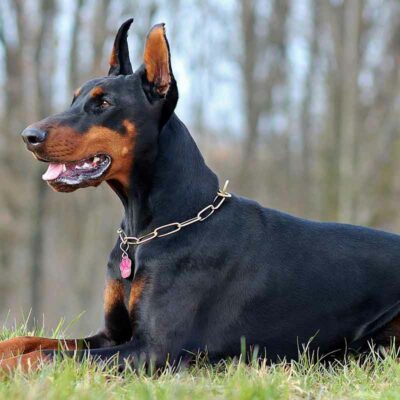
The Doberman Pinscher: A Sleek and Sturdy Canine Companion
The Doberman Pinscher, often affectionately called “Dobes” or “Dobies,” is a medium-large breed of dog known for its sleek and robust appearance. These fearless, loyal, and highly intelligent canines excel in various roles, making them ideal for police, war, and guard duties, yet they also prove to be outstanding companions.
Well-trained Dobermans often thrive in the company of children and various social settings, even excelling as therapy dogs. Their typical temperament is a harmonious blend of docility and protectiveness. Despite their reputation as fierce guard dogs, Dobermans are generally gentle and not naturally aggressive.
Key Characteristics of the Doberman Pinscher
Doberman Pinschers, despite their intimidating appearance, are affectionate and intelligent dogs suitable for a wide range of living situations. Their active and diligent nature, along with their reputation as guard dogs, makes them an excellent choice for families or owners with large properties.
A Glimpse into the History of the Doberman Pinscher
The Doberman Pinscher breed originated in Germany at the turn of the 20th century. It owes its name to Karl Friedrich Louis Dobermann, who aimed to create a medium-sized companion and guard dog. Mr. Dobermann, a tax collector who also ran the local dog pound, had access to various dog breeds, which he used in his breeding program. The Doberman is believed to have descended from breeds such as the Rottweiler, black and tan terrier, German pinscher, and possibly the Greyhound.
Doberman Pinschers are treasured for their exceptional intelligence, loyalty, and athletic abilities. Over the years, they have served dutifully as war and police dogs while remaining faithful companions to many.
Known for their muscular build and enduring strength, Dobermans played a significant role as the official dog of the Marine Corps during World War II. In fact, 25 Dobermans that fought alongside troops on Guam are commemorated at the World War II War Dog Memorial at the National War Dog Cemetery at Naval Base Guam.
Traditionally, Dobermans have had their tails docked shortly after birth, followed by the surgical cropping of their ears to make them stand erect. The practice of ear cropping and tail docking in dogs, including Dobermans, has generated controversy. While some countries have prohibited these practices, they remain permissible in the United States, although many opt to keep their Dobermans’ ears in their natural state.
Doberman Pinscher Care
Although Dobermans are often perceived as serious dogs, they can also display playfulness and exuberance, especially as puppies. They get along well with children, provided the child treats the dog with respect. Moreover, they are easily trainable and possess the desire to learn alongside their owner.
Exercise
Most Dobermans have a relatively high energy level and require ample exercise to maintain their health. Their natural athleticism benefits from daily brisk walks, runs, and playtime. It’s essential to have a securely fenced yard to allow your Doberman room to play, but avoid leaving them outside for extended periods, especially in cold weather. Dobermans prefer being part of the family and not isolated outside.
Grooming
Doberman Pinschers have a short, smooth coat that demands minimal grooming. Regular brushing once a week or a rub-down with a damp cloth is typically sufficient. Bathing should be occasional, as needed, and to manage any odors or dirt accumulation. In the case of natural ears (uncropped), extra attention to ear cleaning is advisable. Monthly nail trimming is important to prevent splitting or tearing, and regular teeth brushing a few times a week helps maintain dental health.
Training
Dobermans are highly intelligent and quick learners. Proper training is crucial to ensure good behavior. Early socialization is equally important to prevent fearfulness or aggression. Leash walking is recommended when out with your Doberman, as they may display aggression towards unfamiliar dogs and a defensive stance if they perceive a threat. This breed’s appearance can sometimes make people uneasy, so keeping your dog on a leash can help ease such concerns.
Common Health Concerns
Responsible breeders adhere to the highest breed standards, reducing the likelihood of inherited health conditions. Nevertheless, some hereditary health problems may affect Dobermans, including Dilated Cardiomyopathy (DCM), Von Willebrand’s disease, Caudal Cervical Spondylomyelopathy (Wobbler Syndrome), and Gastric Dilatation-Volvulus (Bloat).
Diet and Nutrition
Feeding your Doberman should consist of two meals per day, offering up to three and a half cups of dry dog food daily. The precise amount depends on factors like size, age, activity level, and individual needs. Dividing meals into two smaller portions can help prevent gas and bloating. Monitoring your dog’s weight is crucial to prevent obesity and related health issues. Consult your veterinarian to establish the right diet for your pet.


